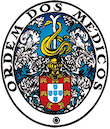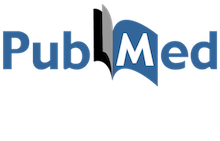Symmetrical Neck Swelling After Percutaneous Coronary Intervention
DOI:
https://doi.org/10.20344/amp.22423Keywords:
Contrast Media, Edema, Iodine/adverse effects, Sialadenitis/chemically inducedAbstract
Cervical edema after iodinated contrast media administration can raise the suspicion of a hypersensitivity reaction, but other diagnoses must be considered. The authors present a rare case of a man who, during the diagnostic investigation of a patient with thoracic pain developed severe submandibular swelling and local pain after a percutaneous coronary intervention with iodinated contrast media. The cervical computerized tomography revealed enlargement of the submandibular glands with adjacent fat stranding, suggesting contrast-induced sialadenitis. In the allergology department skin prick tests, intradermal tests and epicutaneous test with suspected iodinated contrast media and alternative were performed, which were negative. Drug provocation tests with alternative iodinated contrast media were negative. Different approaches can be considered when approaching these patients. Our algorithm includes the evaluation of a potential hypersensitivity reaction with a skin test and drug provocation test with alternative iodinated contrast media.
Downloads
References
Rosado Ingelmo A, Doña Diaz I, Cabañas Moreno R, Moya Quesada MC, García-Avilés C, García Nuñez I, et al: Clinical practice guidelines for diagnosis and management of hypersensitivity reactions to contrast
media. J Investig Allergol Clin Immunol. 2016;26:144-55.
Torres MJ, Trautmann A, Böhm I, Scherer K, Barbaud A, Bavbek S, et al: Practice parameters for diagnosing and managing iodinated contrast media hypersensitivity. Allergy. 2021;76:1325-39.
Brockow K, Christiansen C, Kanny G, Clément O, Barbaud A, Bircher A, et al: Management of hypersensitivity reactions to iodinated contrast media. Allergy. 2005;60:150-8.
Jiao A, Farsad K, McVinnie D, Jahangiri Y, Morrison J. Characterization of iodide-induced sialadenitis: meta-analysis of the published case reports in the medical literature. Acad Radiol. 2019;27:428-35.
Miller J, Sussman R. Iodide mumps after intravenous urography. N Engl J Med. 1956;255:433-4.
Sánchez GS, Rubio SD, Terán AL, Calvo BJ. Acute sialadenitis as adverse reaction to iodinated contrast. Radiologia. 2018;60:171-4.
García M, Mielgo B, Sotomayor C, Alonso S, Barranco R, Barrionuevo E, et al. Iodinated contrast medium–induced sialadenitis: proposal of a management algorithm based on a case series analysis. J Investig
Allergol Clin Immunol. 2022;32:484-6.
Lee SH, Kwon OK, Kim YD, Lee Y, Oh CW, Bang JS, et al. Incidence and risk factors of contrast-induced sialadenitis after therapeutic neuroendovascular procedures. Am J Neuroradiol. 2024 (in press). doi:10.3174/ajnr.A8492.
Brockow K, Garvey LH, Aberer W, Atanaskovic-Markovic M, Barbaud A, Bilo MB, et al. Skin test concentrations for systemically administered drugs- an ENDA/EAACI Drug Allergy Interest Group position paper.
Allergy. 2013;68:702-12.
Gergis M, Wagdy K, Elborae A, Elguindy A. Contrast-induced sialadenitis a forgotten complication of coronary angiography. J Am Coll Cardiol Case Rep. 2022;4:101653.
Cunha IM, Maganinho P, Marques ML, Amorim JP, Gomes E. Recurrent neck swelling after iodinated contrast media administration. Radiol Case Rep. 2021;16:1508-10.
Lucarelli A, Perandini S, Borsato A, Strazimiri E, Montemezzi S. Iodinated contrast-induced sialadenitis: a review of the literature and sonographic findings in a clinical case. J Ultrason. 2018;18:359-64.
Egan M, Maglione PJ. Tolerated percutaneous coronary interventions in a patient with iodide mumps. Ann Allergy Asthma Immunol. 2015;115:253-4.
Park KW, Han AY, Kim CM, Tam K, Chhetri DK. Contrast-induced sialadenitis of the sublingual glands. Case Rep Otolaryngol. 2020;2020:1-4.
Downloads
Published
How to Cite
Issue
Section
License
Copyright (c) 2025 Acta Médica Portuguesa

This work is licensed under a Creative Commons Attribution-NonCommercial 4.0 International License.
All the articles published in the AMP are open access and comply with the requirements of funding agencies or academic institutions. The AMP is governed by the terms of the Creative Commons ‘Attribution – Non-Commercial Use - (CC-BY-NC)’ license, regarding the use by third parties.
It is the author’s responsibility to obtain approval for the reproduction of figures, tables, etc. from other publications.
Upon acceptance of an article for publication, the authors will be asked to complete the ICMJE “Copyright Liability and Copyright Sharing Statement “(http://www.actamedicaportuguesa.com/info/AMP-NormasPublicacao.pdf) and the “Declaration of Potential Conflicts of Interest” (http:// www.icmje.org/conflicts-of-interest). An e-mail will be sent to the corresponding author to acknowledge receipt of the manuscript.
After publication, the authors are authorised to make their articles available in repositories of their institutions of origin, as long as they always mention where they were published and according to the Creative Commons license.









